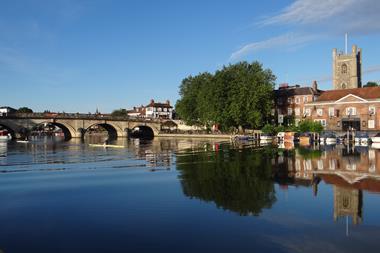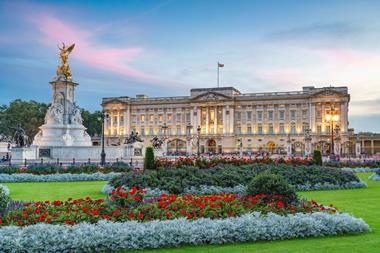
Laura Sexton spent a day in Newmarket, discovering the history of horseracing, taking a look behind the scenes, and finding out why groups should visit.
Newmarket is a centre for horseracing, with a wealth of history and attractions dedicated to the sport including Charles II’s very own sporting palace and stables.
Discover Newmarket offers tours that cover various attractions across Newmarket including The National Stud, Tattersalls, Palace House, and The Jockey Club Rooms, to name a few.
Having never been a huge fan of horseracing I was curious when I was given the chance to visit The National Stud and the National Heritage Centre for Horseracing and Sporting Art in Newmarket. This recently opened and includes a combination of three charity run attractions: the National Horseracing Museum, Palace House run by the British Sporting Art Trust and the arena run by the Retraining of Racehorses charity.
On a chilly morning in February, I set out on a mission of sussing out what Discover Newmarket and the aforementioned venues could offer groups.
My visit started at The National Stud café, the Wavertree’s Coffee & Gift Shop, where teas, coffees, and pastries were served – not a bad way to start a day. We were picked up by a shuttle bus which took us on a short driving tour around the paddocks, pointing out various hot spots such as the graves of equine race winners.

Pictured: Horses at The National Stud
The Discover Newmarket team explained that bespoke tours can easily be arranged for groups who want to get something particular out of a visit, be it visiting the horse paddocks, or viewing the art galleries.
The first stop on the tour took us to look at the breeding stables, where our guide explained to us the method in which they breed horses and discussed the process in which people pay to breed their mares with a stallion, in the hopes of creating a future winning horse.
I was then lucky enough to see some foals in the fields with their mothers, and I was even luckier that they came cantering up to the fences for a stroke. We were told by our guide that foals are born out of proportion, with legs that are too long and almost full size. They therefore can’t reach the ground properly to eat so they can be seen in almost split like stances as they attempt to reach the grass.
Our next stop took us on an exclusive visit to Ed Dunlop’s Farm to take a look behind the scenes of the sport. The farm houses around 90 horses, a lot of which could be seen poking their heads out from their stables. The most incredible part was watching and learning about their training methods which involved a steam room used to clear the horses’ nasal tubes, and a water treadmill.
The latter I was able to see in action. The treadmill has glass sides and fills with water so that the horse builds its muscles up by the resistance of having to wade through water. It also acts a kind of therapy as the water soothes the horse’s legs.
Next on the agenda was a visit to Palace House, Charles II’s sporting palace, and a segment of the National Heritage Centre for Horseracing and Sporting Art. Palace House takes a look at other sports where horses are involved besides racing, such as polo, hunting and dressage.
Here we saw galleries of artwork. It was interesting to see the change in style. Considering I am not a fine art devotee, the museum’s relaxed atmosphere and quaint rooms meant I didn’t feel as though I was being bombarded with art or information.
When looking around I discovered that in older paintings, horses are seen with all four legs outstretched when running. This, I learnt, was because no one had properly studied the anatomy of horses when these were painted and didn’t notice the true movements of their legs when running. After this was studied, paintings and drawings started to look much more realistic.
We later watched a virtual Claire Balding take us through some of the greatest races and jockeys of all time, before viewing the trophy cabinet.

Pictured: National Horseracing Museum
For those feeling adventurous, the National Heritage Centre also has a horse simulator, where visitors can get to see what it’s like to ride a horse in a race. I have to admit I was not feeling so adventurous but for groups feeling competitive or fancying a bit of fun, the chance to have a go shouldn’t be missed.
We later went to The Tack Room café, where soups, sandwiches, and scones were on the menu. I tucked into some cheese and onion sandwiches and slurped on some mushroom soup, and enjoyed a pot of tea, all rather welcoming considering it was freezing outside.
The café is relatively small but has plenty of seating available, and is a great place to retreat to after your visit or during for a quick lunch break.
After an educational and entertaining day, I was pleased to have delved into an area of sport that I had not previously had much interest in. Having learnt a lot, I was able to head home with a better understanding of the sport and a greater appreciation for everyone involved.
Tours for Groups
Whether your group are horseracing fans or not, Discover Newmarket can offer a great day out for groups of all ages.
Groups can book set tours which include The History and Heritage Tour, the Short Head Tour and The Country Mile Tour which have set itineraries, as well as The Munnings Tour which visits the Munnings Museum nearby.
Bespoke tours can easily be arranged by the Discover Newmarket team.
The National Heritage Centre for Horseracing and Sporting Art is fully accessible with wheelchair access.
Group rates include a ten per cent discount on tickets for groups of 15 or more.
For more information visit www.discovernewmarket.co.uk/pages/tour/.












